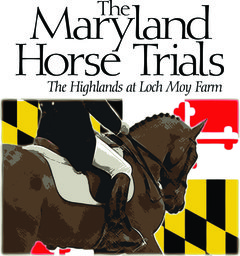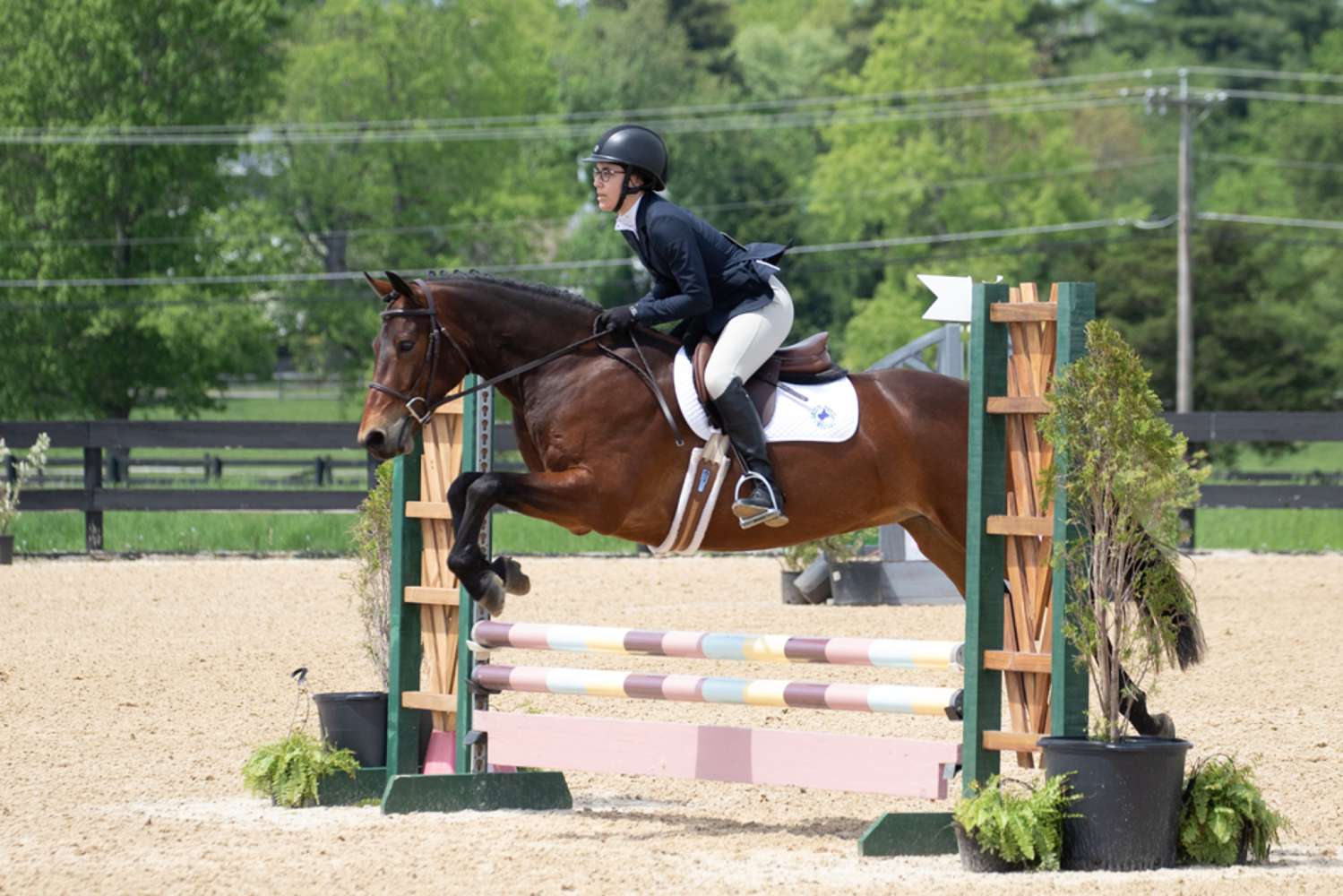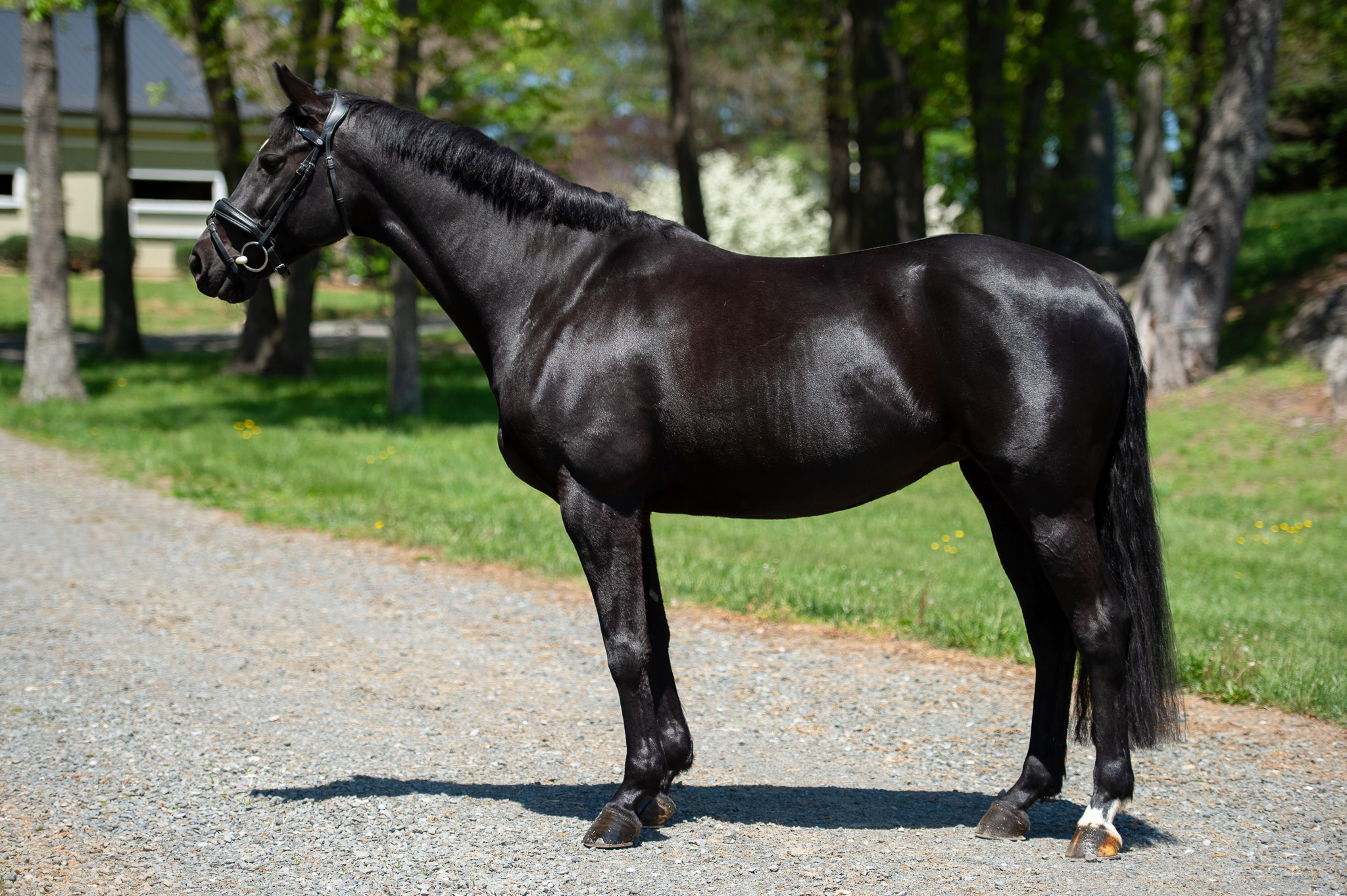
Allison Springer and Fairvoya S competing in the Modified division at The Fork at TIEC, one of seven event venues in the U.S. and Canada offering the CCI1* level in 2020. Photo by Leslie Threlkeld.
The CCI1*-Intro level is a great introduction to FEI competition at the Modified height, an excellent stepping stone to Prelim, and a worthwhile goal to aim for in and of itself. It made its debut last year, when all the FEI levels got bumped up by a notch to accommodate the new five-star system.
Foshay International in New Brunswick, Canada was the first North American event to offer what we now call the CCI1* level (then called CCI-Intro) in 2018 — that year, there were only 12 CCI-Intro events in the world. In 2019, Virginia Horse Trials and the Maryland Horse Trials offered CCI1*s, and for 2020 several more U.S. events have climbed on board. A total of eight U.S. and one Canadian event will host CCI1*s in 2020. Seventy-five CCI1*s will be held worldwide.
For many riders, the CCI1* will be their first international competition. But with various rulebooks to juggle (rulebook links: FEI, USEF) and qualification/registration hoops to jump through before you even trot up the centerline, making the leap can be intimidating. We don’t want anyone to feel put off from circling a CCI1* on their 2020 calendar just because of paperwork, so we’ll try to answer some of your most commonly asked questions. Be sure to also thoroughly familiarize yourself with the rulebooks, which outline the topics below in greater detail.
Where will CCI1* events be held in the U.S. and Canada in 2020?
- Designer Builders Stable View Spring CCI-S (Aiken, SC) – CCI1*-S – March 27-28, 2020 [Website] [USEA] [FEI]
- The Fork at TIEC (Tryon, NC) – CCI1*-S – April 2-5, 2020 [Website] [USEA] [FEI]
- Ocala International 3-Day Festival of Eventing (Ocala, FL) – CCI1*-L -April 9-12, 2020 [Website] [USEA] [FEI]
- VHT International & H.T. (Lexington, VA) – CCI1*-L – May 21-24, 2020 [Website] [USEA] [FEI]
- The Maryland International & H.T. (Adamstown, MD) – CCI1*-S – July 3-5, 2020 [Website] [USEA] [FEI]
- Foshay International (Jemseg, New Brunswick, Canada) – Sept. 3-6, 2020 [Website] [FEI]
- Stable View Oktoberfest 1/2/3/4* and H.T. (Aiken, SC) – CCI1-S* – Sept. 24-27, 2020 [Website] [USEA] [FEI]
- The Virginia International & H.T. (Lexington, VA) – CCI1*-L – Oct. 29-Nov. 1, 2020 [Website] [USEA] [FEI]
- Grand Oaks Horse Trials (Weirsdale, FL) – CCI1*-S – Nov. 21-22, 2020 [Website] [USEA] [FEI]
The FEI Schedule is your official resource for all information regarding FEI eventing competitions. FEI Schedules can be found by utilizing the FEI Calendar Search. The USEF also recently launched a 2020 U.S. FEI Competition Quick Links page.
How do I qualify?
Qualification requirements for the CCI1* level are determined by each country’s national federations. The USEF qualification is as follows: Both the competitor and the horse, though not necessarily as a combination, must have achieved 1 MER at the Modified level or higher. Note that this is a change from the 2019 requirement, which required a MER at Preliminary. The new rule goes into effect Feb. 1, 2020, at which time the USEF rulebook will be updated to reflect the new qualification requirements.
The MER must be obtained in the 12-month period prior to the competition. Qualifications must be fulfilled at least 10 days before the cross country test of the competition for which it is needed.
For Canadian competitors the qualification is 3 MERs at Training level, though not necessarily as a combination.
What is a MER?
For the Modified level and above, an MER is achieved by completing the entire horse trial and scoring:
- Not more than 50 penalty points in dressage; and
- No jumping penalties on cross country, and not more than 90 seconds (36 penalty points) exceeding the optimum time; and
- Not more than 16 penalties at obstacles in show jumping
- 25 penalty points received for Dangerous Riding will not achieve a National Qualifying result.
Can qualification be lost?
As with any FEI level, loss of qualification may occur when a certain number of cumulative cross country penalties have been assessed. This, and the protocol for requalification, is explained in “EV105: Loss of Qualifications” of the 2020 USEF Rulebook.
Are there age restrictions?
With permission of his National Federation, a rider may compete in a CCI1* competition from the beginning of the calendar year in which he or she turns 12. A horse may compete in CCI1* competition from the beginning of their 5-year-old year.
What color are my cross country numbers?
Orange on a blue background. If an event is running a Modified horse trials and a CCI1* simultaneously, they must be differentiated.
What is the format?
CCI1* may take place as a Short or Long format as to the order of tests and inspection requirements.
What’s my dressage test?
The 2020 1* Test, which takes place in a standard size arena and includes 10 meter trot circles, leg yield, lengthening of stride at trot/canter, and a stretchy circle at the trot. All trot work must be done sitting unless specified. Only a snaffle bridle is allowed for the CCI1* level (no double bridle). Check the rulebook for saddlery/attire specs for CCI1* and all FEI levels.
What are the jumping specs?
Cross Country
Maximum jump dimensions are …
Fixed: 1.05 m
Brush: 1.25m
Top spread: 1.20m
Base spread: 1.80m
Without height: 2.40m
Drop: 1.40m
Distance: minimum of 2,000, maximum of 3,000
Jumping efforts: minimum of 20, maximum of 25
Speed: 500 mpm
Time: Minimum of 4’00’,’ maximum of 6’00’’
Show Jumping
Maximum jump dimensions are …
Height: 1.10
Oxer spread: 1.25
Triple bar spread: 1.45
Distance: 600m
Speed: 350m
Number of obstacles: 10-11
Max Efforts: 12
How do I enter a CCI1*?
U.S. competitors should start by going to your Athlete dashboard at USEF.org. There, you will find information on FEI registration and the USEF FEI Entry System portal. Be sure to start tackling registration well in advance, as getting all your ducks in a row can be a time-consuming progress especially with regard to your horse’s FEI passport. We highly recommend reviewing the helpful document Horse Passports 101 before applying. A number of additional resources are available via the U.S. FEI Competitions page.
Pay extra attention to the “Closing Date for Definite Entries,” which can be found under section VII on the FEI Schedule. This Definite Entry Date may be as early as four weeks prior to the competition. For 2020, the USEF FEI Entry Portal will close and no new entries will be accepted after 3 p.m. EST on the Definite Entry Date.
Attentional eventers of all levels! A memo, “Important Update – USEF FEI Entry Process,” was issued earlier this week — be sure to read it here.
Go Eventing.





































